مورد لوحات الدوائر المطبوعة للإلكترونيات الاستهلاكية
South-Electronic
نحن في South-Electronic متخصصون في توفير لوحات الدوائر المطبوعة للإلكترونيات الاستهلاكية عالية الجودة والتي تضمن المتانة والأداء المتفوق والتكامل السلس، مما يجعل أجهزتك أكثر موثوقية وكفاءة.
اكتشف جودة لا مثيل لها مع لوحات الدوائر المطبوعة للإلكترونيات الاستهلاكية
مرحبًا بك في South-Electronic، مصدرك الأول للوحات الدوائر المطبوعة للإلكترونيات الاستهلاكية. تم تصميم منتجاتنا خصيصًا لتحسين وظائف كل شيء من الأدوات الشخصية إلى الأجهزة المنزلية.
عندما تختار South-Electronic، لا يمكنك أن تتوقع سوى الأفضل من حيث الجودة والموثوقية لأجهزتك الإلكترونية الاستهلاكية. ستمنح لوحات الدوائر المطبوعة الخاصة بنا منتجاتك الأداء القوي والمتسق الذي تحتاجه للتميز عن المنافسين. دعنا نساعدك في أن تصبح الرائد في صناعتك.
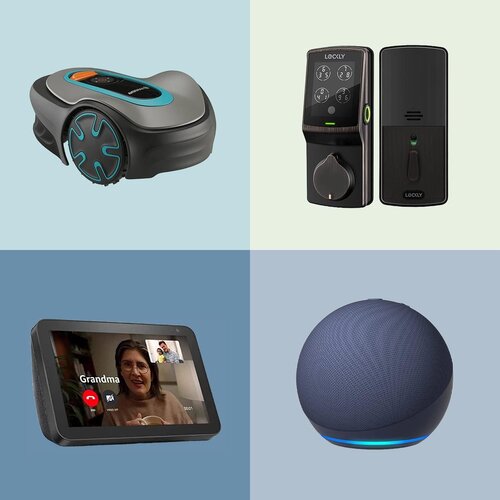
الأجهزة المنزلية الذكية
أنظمة الإضاءة الآلية: تحكم في إضاءة منزلك من خلال حلولنا الذكية والموفرة للطاقة.
أنظمة الأمن والمراقبة: حافظ على منزلك آمنًا من خلال أنظمة المراقبة المتقدمة لدينا التي تبقيك على اتصال ومحميًا.
منظمات الحرارة الذكية: قم بتحسين درجة حرارة منزلك لتحقيق الراحة والتوفير من خلال منظمات الحرارة الذكية سريعة الاستجابة.

الالكترونيات المحمولة
الهواتف الذكية والأجهزة اللوحية: استمتع بتجربة التكنولوجيا المتطورة وإمكانية التنقل من خلال هواتفنا الذكية والأجهزة اللوحية عالية الأداء.
مشغلات الموسيقى المحمولة: اصطحب الموسيقى الخاصة بك إلى كل مكان باستخدام مشغلات الموسيقى المحمولة صغيرة الحجم وعالية الجودة.
أجهزة القراءة الإلكترونية: استمتع بكتبك المفضلة أثناء التنقل من خلال أجهزة القراءة الإلكترونية خفيفة الوزن والصديقة للعين.
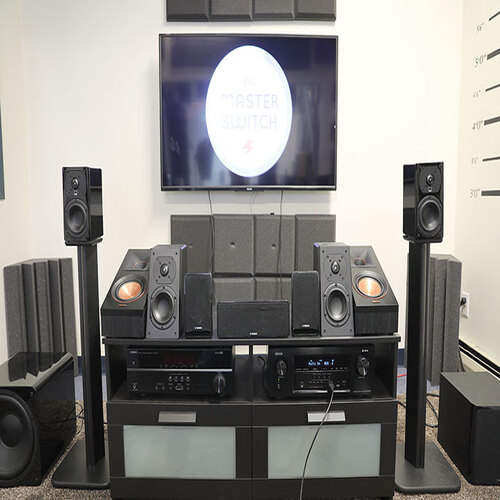
نظام الترفيه
وحدات تحكم الألعاب: انغمس في تجربة ألعاب غامرة باستخدام وحدات تحكم الألعاب القوية والمتعددة الاستخدامات.
أجهزة التلفزيون الذكية وأجهزة البث: يمكنك بث برامجك وأفلامك المفضلة بوضوح مذهل من خلال أجهزة التلفزيون الذكية وأجهزة البث لدينا.
أنظمة المسرح المنزلي: استمتع بتجربة السينما المنزلية مع أنظمة المسرح المنزلي الحديثة لدينا.
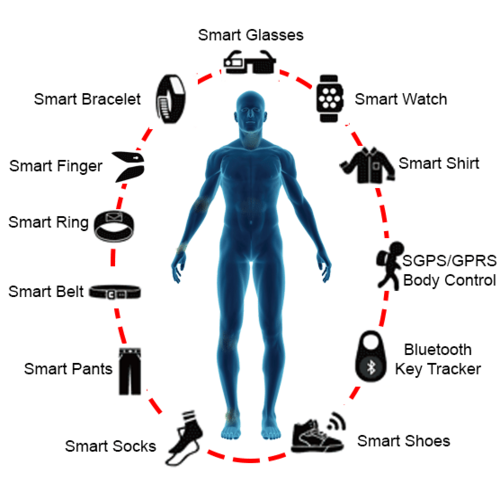
التكنولوجيا القابلة للارتداء
الساعات الذكية: حافظ على اتصالك وصحتك والتزم بالمواعيد مع ساعاتنا الذكية الأنيقة والعملية.
أجهزة تتبع اللياقة البدنية: تتبع أهداف لياقتك البدنية وتقدمك من خلال أجهزة تتبع اللياقة البدنية الدقيقة وسهلة الاستخدام.
سماعات الرأس VR/AR: استكشف الواقع الافتراضي والمعزز باستخدام سماعات الرأس VR/AR المبتكرة.
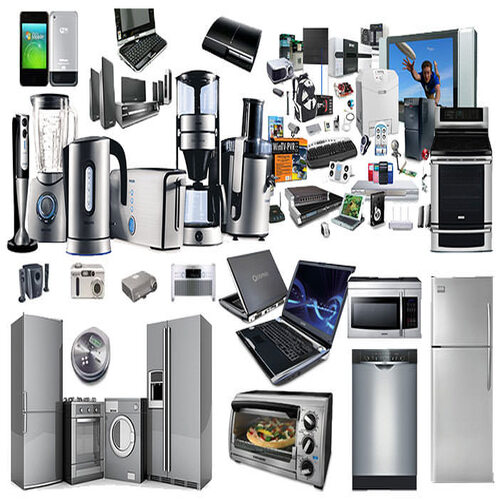
الأجهزة المنزلية والكترونيات المطبخ
الثلاجات الذكية: حافظ على طعامك طازجًا لفترة أطول مع ثلاجاتنا الذكية عالية التقنية والموفرة للطاقة.
أفران الميكروويف الإلكترونية: قم بتبسيط عملية الطهي باستخدام أفران الميكروويف الإلكترونية السريعة وسهلة الاستخدام.
ماكينات صنع القهوة الذكية: قم بتحضير الكوب المثالي في كل مرة باستخدام ماكينات صنع القهوة الذكية القابلة للبرمجة.
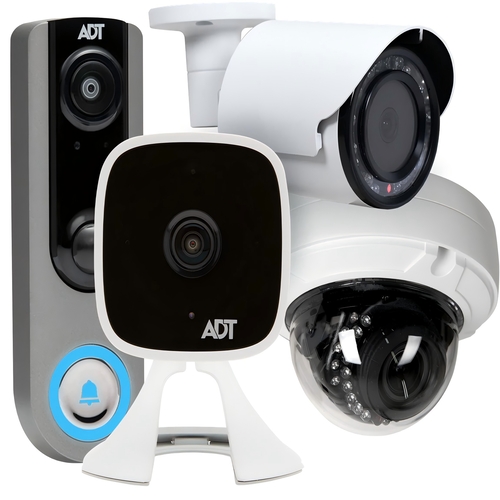
أنظمة الأمن والمراقبة
كاميرات مراقبة للمنزل: راقب منزلك عن بعد باستخدام كاميراتنا الأمنية عالية الدقة.
أنظمة الإنذار: قم بحماية الممتلكات الخاصة بك من خلال أنظمة الإنذار الموثوقة وسهلة الإعداد.
كاميرات جرس الباب: شاهد وتحدث مع الزوار عند باب منزلك من أي مكان باستخدام كاميرات جرس الباب الذكية لدينا.
Why Choose South-Electronic?
-
ضمان جودة فائق
يمكنك الوثوق بنا لأننا نقوم بعمل جيد.
لدينا الكثير من فحوصات الجودة للتأكد من أن كل لوحة نصنعها جيدة. وهذا يعني أنه يمكنك الاعتماد على لوحاتنا للعمل بشكل صحيح وتدوم لفترة طويلة. -
دعم شامل بعد البيع
رضاك طويل الأمد.
مع خدمة ما بعد البيع مدى الحياة وضمان لمدة خمس سنوات، يمكنك الاستمتاع براحة البال، مع العلم أننا ملتزمون بنجاحك إلى ما هو أبعد من التسليم. -
إدارة سلسلة التوريد المبسطة
تسير مشاريعك بسلاسة معنا.
استمتع بكفاءة وشفافية محسّنة مع رؤية سلسلة التوريد الشاملة لدينا، وتبسيط الخدمات اللوجستية والاتصالات في كل خطوة على الطريق.
المشاريع ذات الصلة التي قمنا بتنفيذها
آراء العملاء
الأسئلة الشائعة
الأسئلة الأكثر شيوعًا
أرسل لنا رسالة
كلما كانت التفاصيل أكثر دقة، كلما تمكنا من المضي قدمًا إلى الخطوة التالية أسرع.
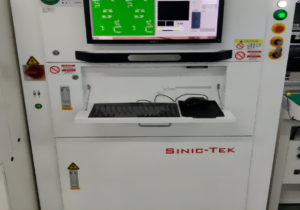
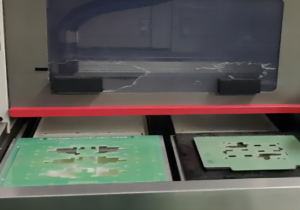
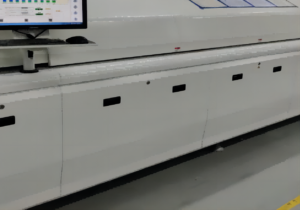
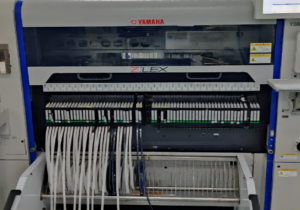
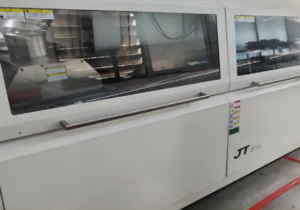
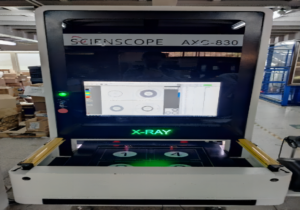

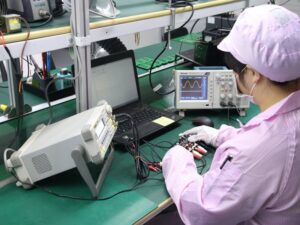

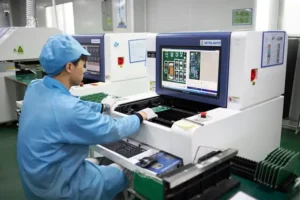



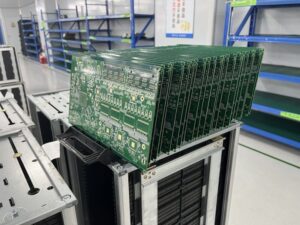

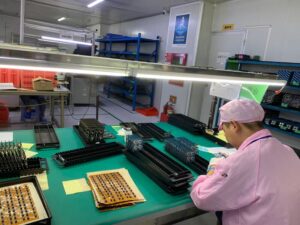



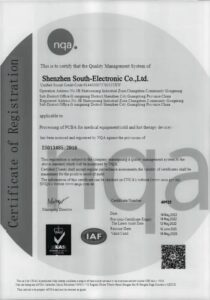
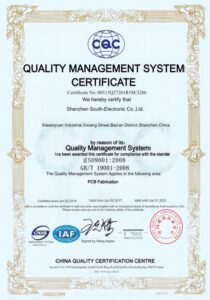







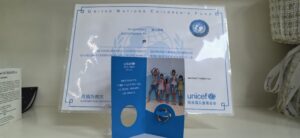

الدليل الكامل للوحات الدوائر المطبوعة للإلكترونيات الاستهلاكية
المحتويات
الفصل 1

مقدمة للإلكترونيات الاستهلاكية ثنائي الفينيل متعدد الكلور
نظرة عامة على ثنائي الفينيل متعدد الكلور في الالكترونيات الاستهلاكية
ثنائي الفينيل متعدد الكلور هو العمود الفقري للإلكترونيات الاستهلاكية الحديثة. إنها الأساس الذي يتم عليه تركيب المكونات الإلكترونية المختلفة لإنشاء دوائر معقدة. فهي الأساس الذي يتم عليه تركيب المكونات الإلكترونية المختلفة لإنشاء دوائر معقدة. في الإلكترونيات الاستهلاكية، تُستخدم لوحات الدوائر المطبوعة في كل جهاز تقريبًا، من الهواتف الذكية والأجهزة اللوحية إلى أجهزة التلفاز والميكروويف. يحدد تصميم وجودة لوحات الدوائر المطبوعة وظائف الجهاز وموثوقيته وأدائه.
تُعَد لوحات الدوائر المطبوعة أمرًا مهمًا في الإلكترونيات الاستهلاكية. فهي تصنع التوصيلات الكهربائية للترانزستورات والمقاومات والمكثفات والمكونات الأخرى التي تسمح للأجهزة الحديثة بأداء وظائفها. ومع تقدم التكنولوجيا، أصبحت لوحات الدوائر المطبوعة للإلكترونيات الاستهلاكية أكثر تعقيدًا، مع لوحات متعددة الطبقات يمكنها دعم المزيد من المكونات في مساحة أصغر. وهذا يسمح بتطوير أجهزة أكثر ذكاءً وكفاءة في استخدام الطاقة وغنية بالميزات والتي تستمر في تغيير الطريقة التي نعيش بها.
أهمية لوحات الدوائر المطبوعة في الأجهزة الاستهلاكية الحديثة
تُعَد لوحات الدوائر المطبوعة أمرًا بالغ الأهمية لأداء ومتانة الإلكترونيات الاستهلاكية. إن لوحات الدوائر المطبوعة مصممة بدقة لتحمل متطلبات الاستخدام اليومي والظروف المحددة التي تعمل بها الأجهزة المختلفة. على سبيل المثال، يجب أن تكون لوحة الدوائر المطبوعة المستخدمة في جهاز يمكن ارتداؤه مثل الساعة الذكية متينة ومرنة للغاية وقادرة على تحمل الإجهاد البدني والعوامل البيئية مثل الرطوبة وتغيرات درجة الحرارة.
وعلاوة على ذلك، فإن أهمية لوحات الدوائر المطبوعة تمتد إلى ما هو أبعد من مجرد الوظيفة. ففي صناعة الإلكترونيات الاستهلاكية، حيث المنافسة في السوق شرسة، يساهم الابتكار في تصميم لوحات الدوائر المطبوعة بشكل مباشر في النجاح التجاري للمنتجات. يمكن أن تؤدي لوحات الدوائر المطبوعة المتقدمة إلى إلكترونيات أصغر وأسرع وأقوى، مما يجذب المستهلكين الذين يبحثون عن أحدث التقنيات. بالإضافة إلى ذلك، تؤثر كفاءة لوحات الدوائر المطبوعة على إجمالي استهلاك الطاقة للجهاز، وهو عامل حاسم في الامتثال لمعايير الطاقة العالمية وتفضيلات المستهلكين للمنتجات المستدامة.
في الختام، تعتبر لوحات الدوائر المطبوعة لا غنى عنها في تطوير وتعزيز الإلكترونيات الاستهلاكية. فهي لا تضمن فقط أن تعمل الأجهزة على النحو المقصود ولكنها تلعب أيضًا دورًا مهمًا في الابتكار المستمر وقابلية تسويق المنتجات الاستهلاكية. مع استمرار تقدم التكنولوجيا، من المتوقع أن ينمو دور لوحات الدوائر المطبوعة في الإلكترونيات الاستهلاكية بشكل أكبر، مما يؤدي إلى قدرات جديدة في الاتصال والأداء وتجربة المستخدم.
الفصل 2
أنواع لوحات الدوائر المطبوعة المستخدمة في الإلكترونيات الاستهلاكية
لوحات الدوائر المطبوعة أحادية الطبقة وثنائية الطبقة ومتعددة الطبقات
لوحات الدوائر المطبوعة أحادية الطبقة هي الأبسط، حيث تحتوي على طبقة واحدة من المواد الموصلة، عادةً النحاس، مثبتة على جانب واحد من اللوحة. تُلحَّم المكونات على جانب واحد، ويُطبع الدائرة على الجانب الآخر. تُستخدم عادةً في الأجهزة الأبسط مثل وحدات التغذية الكهربائية، المرحلات، وأجهزة الاستشعار لأنها رخيصة وسهلة الصنع.
لوحات الدوائر المطبوعة ثنائية الطبقة
تحتوي على طبقات نحاسية على كلا جانبي اللوحة، مما يسمح بكثافة أعلى للمكونات والاتصالات. يتم توصيلها من خلال ثقوب تمر عبر اللوحة، مما يوفر مرونة أفضل في التصميم. ينتشر هذا النوع في الأجهزة الأكثر تعقيدًا مثل إضاءة LED ولوحات عدادات السيارات.
لوحات الدوائر المطبوعة متعددة الطبقات
تتكون من ثلاث أو أكثر من اللوحات ثنائية الطبقة المكدسة معًا. تُفصل هذه الطبقات بمواد عازلة وتُوصَل عبر ثقوب مطلية. تُعدّ اللوحات متعددة الطبقات ضرورية للإلكترونيات الاستهلاكية الحديثة مثل الهواتف الذكية، وأجهزة الكمبيوتر المحمول، والأجهزة الطبية لأنها توفر وظائف محسّنة ومعالجة إشارة عالية السرعة في هياكل مدمجة.
لوحات الدوائر المطبوعة المرنة والصلبة-المرنة
يتم تصنيع لوحات الدوائر المطبوعة المرنة من مواد يمكن أن تنثني وتلتوي، غالبًا باستخدام البلاستيك مثل البولييميد أو بوليمرات مماثلة. اللوحة خفيفة الوزن، رقيقة، ويمكنها تحمل المزيد من الانحناء والحركة مقارنة بلوحات الدوائر الصلبة. هي مثالية للإلكترونيات المحمولة الحديثة، مثل الأجهزة القابلة للارتداء، حيث تعتبر المرونة والقيود المكانية قلقًا رئيسيًا.
لوحات الدوائر المطبوعة الصلبة-المرنة هي مزيج من اللوحات الصلبة والمرنة. تحتوي على طبقات متعددة تشمل ركائز صلبة ومرنة، والتي تُصفّح معًا لتشكّل هيكلًا واحدًا. تُستخدم لوحات الدوائر الصلبة-المرنة في الإلكترونيات الاستهلاكية المتطورة حيث تتطلب التكوينات المعقدة، مثل الكاميرات، والهواتف المحمولة، والأجهزة القابلة للارتداء الراقية. تتيح تصميمًا أكثر انسيابية من خلال إلغاء الحاجة إلى موصلات متعددة وكابلات وصل. يحسّن هذا الموثوقية والأداء من خلال تقليل عدد الوصلات الملحومة ومشاكل الاتصال.
تطبيقات الأنواع المختلفة للدوائر المطبوعة
يتم استخدام كل نوع من أنواع الدوائر المطبوعة في الإلكترونيات الاستهلاكية بناءً على ما يقوم به الجهاز، وكيف صُمم، ومدة صلاحيته:
غالبًا ما تُستخدم اللوحات ذات الجوانب الأحادية في الإلكترونيات الاستهلاكية الخفيفة حيث يجب تقليل التعقيد والتكاليف. تصلح اللوحات ذات الجوانب الثنائية للأجهزة المعقدة باعتدال التي تحتاج إلى دوائر أكثر مما يمكن أن توفره اللوحات ذات الجانب الواحد ولكن بتكلفة أقل من اللوحات متعددة الطبقات. تُعدّ اللوحات متعددة الطبقات ضرورية للأجهزة عالية الأداء ومتعددة الوظائف حيث تكون المساحة والكفاءة مهمتين. توجد الدوائر المطبوعة المرنة بشكل شائع في الأجهزة القابلة للارتداء الحديثة والأجهزة المحمولة التي تستفيد من مرونتها ومتانتها للتعامل مع الحركة. تكون لوحات الدوائر الصلبة-المرنة ذات قيمة خاصة في التطبيقات التي تتطلب متانة اللوحات الصلبة مع تنوع اللوحات المرنة، مما يوفر حلولًا مثالية لتجميعات الإلكترونيات المدمجة والمعقدة.
معرفة الأنواع المختلفة للدوائر المطبوعة وما تُستخدم له سيساعدك على اختيار اللوحة المناسبة لمنتجك الإلكتروني الاستهلاكي. وبهذه الطريقة، تحصل على أفضل أداء بأقل مبلغ من المال.

الفصل 3

المواد والمكونات
المواد الشائعة المستخدمة في لوحات الدوائر المطبوعة في الإلكترونيات الاستهلاكية
الاختيار الصحيح للمواد مهم لأنها تؤثر على كل شيء بدءًا من الأداء والمتانة وصولاً إلى مدى سهولة اللحام. إليك بعض المواد الشائعة المستخدمة في لوحات الدوائر المطبوعة في الإلكترونيات الاستهلاكية:
مواد الركيزة: هي المادة الأساسية للوحة الدائرة المطبوعة، وعادة ما تكون مصنوعة من الألياف الزجاجية المعروفة باسم FR4. تقدم هذه المادة عزلًا كهربائيًا ممتازًا ومتانة بتكلفة معقولة، مما يجعلها معياراً للإلكترونيات الاستهلاكية. وللتطبيقات عالية التردد، تُستخدم مواد مثل روجرز أو تفلون بفضل أدائها الفائق في الترددات العالية.
الطبقات الموصلة: النحاس هو المادة الموصلة الأكثر شيوعًا في إنشاء الدوائر على لوحة الدائرة المطبوعة. يُفضل بسبب توصيله الكهربائي الممتاز وقدرته على تشكيل تفاصيل دقيقة. يمكن أن يختلف سمك طبقة النحاس حسب التطبيق، حيث تحتاج التيارات العالية إلى نحاس أكثر سمكًا.
قناع اللحام: يتم تطبيق هذه الطبقة فوق طبقة النحاس لعزل مسارات النحاس ومنع التلامس العرضي مع معادن أخرى، أو اللحام، أو الأجزاء الموصلة. تساعد هذه الطبقة في تجنب الدوائر القصيرة وهي عادة ما تكون باللون الأخضر ولكن يمكن استخدامها بألوان مختلفة لأغراض التشفير أو العلامات التجارية.
الشاشة الحريرية: عادة ما تكون بيضاء، لكنها متوفرة بألوان متعددة، تُستخدم لإضافة تسميات ومؤشرات للوحة الدائرة المطبوعة، مما يساعد في التعرف على المكونات المختلفة واتجاهاتها.
المكونات الأساسية وأدوارها
تحتوي لوحة الدائرة المطبوعة على مجموعة متنوعة من المكونات الإلكترونية، كل منها يؤدي وظيفة محددة ضرورية لعمل الأجهزة الإلكترونية الاستهلاكية:
المكثفات: تخزن الطاقة الكهربائية وتطلقها عند الحاجة. تُستخدم لتسوية التقلبات الكهربائية، وتصفية الإشارات، وأداء وظائف التوقيت. تعد المكثفات ضرورية لإدارة الطاقة ونزاهة الإشارات في الإلكترونيات الاستهلاكية.
المقاومات: تتحكم المقاومات في التيار الكهربائي الذي يمر عبرها. تُستخدم لإدارة مستويات الجهد داخل الدوائر، وتوزيع الجهود، وتقييد التيار، وتوفير الحمولة للدوائر. تجعل سيطرتها الدقيقة على التيار منها مكونات لا غنى عنها تقريبًا في جميع الأجهزة الإلكترونية.
الدوائر المتكاملة (ICs): تُعرف أيضًا بالرقائق الصغيرة، وهي دوائر معقدة تحتوي على مئات لملايين من الترانزستورات والمقاومات والمكثفات في عبوة صغيرة. يمكن أن تعمل كمعززات، معالجات دقيقة، أجهزة ذاكرة، وغير ذلك. إنها قلب الإلكترونيات الحديثة، مما يتيح الحسابات المعقدة والوظائف للأجهزة الاستهلاكية مثل الهواتف الذكية وأجهزة الكمبيوتر.
الترانزستورات: تُستخدم لتبديل الإشارات والطاقة الإلكترونية. إنها لبنة البناء الأساسية في الدوائر المتكاملة وتُستخدم بشكل واسع في التطبيقات التعزيزية والتبديلية.
الثنائيات: بما في ذلك LED، تسمح الثنائيات للتيار بالتدفق في اتجاه واحد ولكن تمنعه في الاتجاه المعاكس. تُستخدم لتحويل الطاقة، استئصال الإشارات، وتنظيم مستويات الجهد.
الفصل 4
اعتبارات التصميم للدوائر المطبوعة في الإلكترونيات الاستهلاكية
التصميم من أجل الكفاءة والموثوقية
عندما يتعلق الأمر بتصميم لوحات الدوائر المطبوعة للإلكترونيات الاستهلاكية، فإن الكفاءة والموثوقية هما الأساس. يحتاج المصممون إلى التأكد من أن كل لوحة دائرة مطبوعة لا تقتصر فقط على تلبية المتطلبات الوظيفية للجهاز، بل تعمل أيضًا بكفاءة تحت ظروف مختلفة. إليك بعض الاستراتيجيات الرئيسية التي يجب مراعاتها:
تقليل استهلاك الطاقة: عند تصميم دوائر تستخدم طاقة أقل، فإنك تمد عمر بطارية جهازك وتقليل كمية الحرارة التي تولدها. هذا يعني استخدام مكونات تعمل بقدرة أقل ودمج أوضاع توفير الطاقة في تصميم جهازك.
زيادة كفاءة الدائرة: استخدام أحدث برامج التصميم وأدوات المحاكاة لتحسين تخطيط وتوجيه الدوائر. يعني هذا وضع المكونات في الأماكن الصحيحة لضمان عدم اضطرار الإشارات الأساسية للسفر بعيدا، واستخدام تقنيات التوجيه الذكية لتقليل التداخل وتدهور الإشارات.
تعزيز الموثوقية: بناء في التكرار للعمليات الحيوية، واستخدام مكونات ذات جودة معروفة بأدائها وعمرها الطويل. كما يعني اختبار الأشياء بشكل مكثف خلال مرحلة التصميم للعثور على أي نقاط ضعف وإصلاحها.
اعتبارات للأجهزة المدمجة والمعقدة
مع صغر حجم وقوة الإلكترونيات الاستهلاكية، يجب أن يواكب تصميم PCB متطلبات الحجم الصغير والتعقيد.
تكنولوجيا التوصيل عالي الكثافة (HDI): تحتوي لوحات HDI على مسافات وخطوط دقيقة، وفتحات أقل حجماً، وكثافة أعلى للوسادة الاتصال مقارنة بـ PCB التقليدية، مما يدعم المزيد من الوظائف لكل وحدة مساحة، وهي أمر بالغ الأهمية للأجهزة المدمجة مثل الهواتف الذكية.
إدارة الطبقات: الاستخدام الفعال لتكوينات متعددة الطبقات لتلائم مزيدًا من الدوائر في المساحات المحدودة. يتضمن ذلك التخطيط لكثافة التوصيلات والتأكد من محاذاة جميع الطبقات وارتباطها دون تعارض.
وضع المكونات: وضع استراتيجي للمكونات لتعظيم المساحة وتقليل التداخل وتحسين التكامل الجمالي والوظيفي العام داخل الجهاز.
إدارة الحرارة في تصميم PCB
الإدارة الحرارية الفعالة ضرورية للحفاظ على الأداء والموثوقية والسلامة في الإلكترونيات الاستهلاكية. يمكن أن تؤدي الحرارة الزائدة إلى فشل الجهاز، وتقليل عمره، وفي الحالات القصوى إلى مخاطر السلامة. تعتبر الاعتبارات الرئيسية:
تقنيات تبديد الحرارة: تضمين ميزات مثل الثقوب الحرارية، والهيت سينك، والوسادات الحرارية في المناطق التي تكون فيها توليد الحرارة كبيراً. تساعد هذه المكونات في نقل الحرارة بعيدًا عن الأجزاء الحساسة للـPCB إلى المناطق التي يمكن تبديدها فيها بأمان أكثر.
اختيار المواد: اختيار الركائز والمواد الموصلة التي يمكنها تحمل درجات حرارة أعلى وتبديد الحرارة بكفاءة. مواد مثل الألومنيوم والنحاس لديها توصيل حراري جيد وغالبًا ما تستخدم في التطبيقات الحرارية الحرجة.
اختيار المكونات وتخطيطها: اختيار المكونات التي تولد حرارة أقل وتحسين تخطيطها لتسهيل تدفق الهواء وتوزيع الحرارة عبر لوحة الدائرة المطبوعة. يتضمن ذلك تجنب تجمع المكونات ذات الطاقة العالية معًا إلا إذا كان ذلك مُدار حرارياً.
المحاكاة والاختبار: استخدام برامج المحاكاة الحرارية للتنبؤ بكيفية توليد الحرارة وتبديدها داخل تخطيط اللوحة، يليه اختبار دقيق تحت ظروف تشغيل متنوعة لضمان الاستقرار الحراري.
باتباع هذه الاعتبارات في التصميم، يمكنك التأكد من أن لوحات الدوائر المطبوعة في الإلكترونيات الاستهلاكية ليست فقط وظيفية ومدمجة، بل أيضًا آمنة وموثوقة لأشخاص يستخدمونها. هذه هي الطريقة التي تواكب بها سرعة الابتكار السريعة وتحافظ على رضا العملاء.
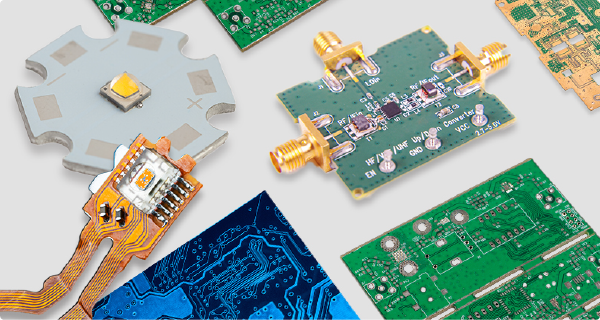
الفصل 5

عمليات التصنيع
دليل خطوة بخطوة لعملية تصنيع اللوحات المطبوعة
يعد تصنيع اللوحات المطبوعة عملية معقدة تتضمن عدة خطوات حاسمة. كل مرحلة ضرورية لضمان جودة ووظائف المنتج النهائي. إليك نظرة تفصيلية على هذه الخطوات:
- التصميم والإخراج: يتم الانتهاء من تصميم اللوحة المطبوعة باستخدام برامج التصميم بمساعدة الحاسوب (CAD)، التي تنتج بيانات تخطيطية مفصلة. تُستخدم هذه البيانات لإنشاء ملف إنتاج يوجه عملية التصنيع.
- اختيار المواد: بناءً على متطلبات التطبيق، يتم اختيار المواد المناسبة للركيزة والنحاس. غالبًا ما تُختار مواد مثل FR4 أو بوليميد لقدرتها على التحمل وخصائصها الكهربائية.
- تطبيق الطبقة الضوئية والتعريض بالأشعة فوق البنفسجية: يتم تطبيق طبقة ضوئية على الطبقات النحاسية للوحات. ثم يتم طباعة تخطيط اللوحة المطبوعة على قناعات ضوئية تُستخدم لتعريض الطبقة الضوئية للأشعة فوق البنفسجية، مما يطور صورة النمط الدائري على اللوحة المطبوعة.
- النقش: أجزاء النحاس غير المحمية بالطبقة الضوئية يتم نقشها كيميائيًا، تاركة وراءها نمط الدائرة.
- الطبقات والربط: بالنسبة للوحات متعددة الطبقات، يتم محاذاة طبقات فردية وربطها معًا تحت تأثير الحرارة والضغط. تتضمن هذه العملية استخدام مادة مسبقة الإعداد (نوع من الغراء الربطي) لضمان تماسك الطبقات بشكل صحيح.
- التثقيب: يتم حفر ثقوب في اللوحة لاستيعاب المكونات الممررة وتوفير توصيلات بين الطبقات. دقة الحفر حاسمة لوظائف اللوحات متعددة الطبقات.
- التغليف: يتم تغليف الثقوب المحفورة بالنحاس لإقامة اتصال بين الطبقات المختلفة للوحة المطبوعة. يعزز هذا التغليف أيضًا قوة الثقوب.
- تطبيق قناع اللحام: يتم تطبيق طبقة قناع اللحام على كامل اللوحة لحماية الدوائر النحاسية ومنع الدوائر القصيرة أثناء اللحام. تضفي هذه الطبقة على اللوحة لونه الأخضر المميز، بالرغم من أنه يمكن استخدام ألوان أخرى.
- طباعة الشاشة الحريرية: تُطبع معلومات مهمة، مثل ملصقات المكونات ونقاط الاختبار، على طبقة قناع اللحام لتسهيل تجميع اللوحة وصيانتها.
- تطبيق النهاية السطحية: تُطبق نهاية سطحية على المسارات النحاسية المكشوفة من خلال قناع اللحام لحمايتها من الأكسدة وتحسين جودة اللحام أثناء تجميع المكونات.
- الاختبار ومراقبة الجودة: تخضع اللوحات المطبوعة المكتملة لاختبارات دقيقة للتحقق من أي أخطاء محتملة. تُستخدم تقنيات مثل الفحص البصري الآلي (AOI)، الفحص بالأشعة السينية، والاختبار الكهربائي على نطاق واسع.
- القطع والتغليف: في النهاية، يتم قطع اللوحة المطبوعة من اللوحة الأكبر التي تم تصنيعها بها وتغليفها للشحن.
خيارات النهاية السطحية وفوائدها
تلعب اختيارات النهاية السطحية دورًا حاسمًا في أداء وطول عمر اللوحة المطبوعة. إليك بعض أنواع النهاية السطحية الشائعة وفوائدها:
- HASL (التسوية الحرارية بالهواء الساخن): هذه واحدة من الأكثر شيوعًا والأقل تكلفة. توفر قدرة لحام جيدة وعمر تخزين طويل. ولكنها أقل ملاءمة للمكونات ذات المسافات الصغيرة بسبب الأسطح غير المتساوية.
- ENIG (الطلاء النيكل الذاتي الغمر بالذهب): يوفر ENIG سطحًا مستويًا وقدرة لحام ممتازة، مما يجعله مثاليًا لتخطيطات المكونات عالية الكثافة. كما يوفر مقاومة جيدة للتآكل وخالٍ من الرصاص.
- OSP (الحفاظ على قابلية اللحام العضوية): OSP هي نهاية سطح توفر سطحًا مستويًا وتناسب المكونات ذات المسافات الصغيرة. إنها صديقة للبيئة وفعالة من حيث التكلفة ولكن لديها عمر تخزين أقصر مقارنة بالنهايات الأخرى.
- الفضة الغامرة: توفر هذه النهاية قابلية لحام ممتازة وسطح مستوي. لها متوسط عمر تخزين وحساس للمناولة، حيث يمكن أن يحدث تلطيخ إذا لم يتم التعامل معها بشكل صحيح.
- القصدير الغامر: معروف بقدرة لحام ممتازة وعمر تخزين جيد، كما أن القصدير الغامر فعّال من حيث التكلفة. لكنه يمكن أن يكون عرضة لنمو الوبر الذي يمكن أن يسبب قصر الدوائر الكهربائية.
الفصل 6
الاختبار وضمان الجودة
إجراءات مراقبة الجودة وطرق الاختبار
تعتبر مراقبة الجودة في تصنيع اللوحات المطبوعة ضرورية لضمان أن المنتجات النهائية تلبي جميع المواصفات وخالية من العيوب التي قد تؤثر على الوظيفة أو المتانة. هنا نظرة عامة على الإجراءات الرئيسية لمراقبة الجودة وطرق الاختبار المستخدمة في الصناعة:
- الفحص البصري: يتم في البداية فحص اللوحة المطبوعة بصريًا للكشف عن أي عيوب ظاهرة مثل الانحرافات، البقع، أو وضع غير صحيح للمكونات. يتم ذلك عادةً يدويًا بواسطة فنيين مهرة وكذلك باستخدام أنظمة آلية مثل الفحص البصري الآلي (AOI).
- الفحص البصري الآلي (AOI): تستخدم آلات AOI كاميرات عالية الدقة لفحص سطح اللوحة المطبوعة للكشف عن العيوب مثل الخدوش، اللحام الرقيق، أو المكونات المفقودة. هذه الطريقة فعالة للغاية في اكتشاف المشكلات في وقت مبكر من عملية الإنتاج.
- الفحص بالأشعة السينية: يستخدم هذا الأسلوب بشكل أساسي لفحص اللوحات متعددة الطبقات وجودة اللحام تحت المكونات مثل المصفوفات الشبكية (BGAs). يساعد الفحص بالأشعة السينية في تحديد مشاكل مثل الانحراف الداخلي وعيوب اللحام المخفية.
- الاختبار الكهربائي: يتم اختبار الوظائف الكهربائية باستخدام تجهيزات اختبار ذات مسمار أو أجهزة اختبار مزودة بمسبار طائر. تتحقق هذه الاختبارات من القصر، القواطع، المقاومة، السعة، وغيرها من المعايير الكهربائية لضمان أداء اللوحة المطبوعة كما هو مصمم.
- الاختبار داخل الدائرة (ICT): يشمل اختبار ICT فحص المكونات الفردية على اللوحة لضمان أنها تعمل بشكل صحيح ومثبتة بشكل صحيح. هذه مرحلة اختبار أكثر شمولًا يمكن أيضًا برمجة المتحكمات الدقيقة أو الأجهزة القابلة للبرمجة الأخرى على اللوحة المطبوعة.
- الاختبار الوظيفي: بعد تجميع اللوحة المطبوعة، تمر بالاختبار الوظيفي. يتم هنا اختبار اللوحة كاملة تحت ظروف عمل طبيعية للتأكد من أن كل شيء يعمل كما هو مفترض.
- اختبار الإجهاد البيئي: يشمل هذا الاختبار تعرض اللوحة المطبوعة لدرجات حرارة قصوى، مستويات رطوبة، واهتزازات للتأكد من الاستقرار والموثوقية تحت الظروف القاسية.
- اختبار التحمّل: بعض اللوحات المطبوعة تخضع لاختبار التحمّل، والذي يتضمن تشغيل اللوحة على طاقة عالية ودرجة حرارة لفترة طويلة. يساعد هذا في تحديد الفشل المبكر وضمان الموثوقية طويلة الأمد.
ضمان المتانة والوظائف في الإلكترونيات الاستهلاكية
لضمان أن اللوحات المطبوعة المستخدمة في الإلكترونيات الاستهلاكية متينة وعملية على مدى حياتها المتوقعة، يقوم المصنعون بتنفيذ عدة تدابير استراتيجية:
- استخدام مواد عالية الجودة: اختيار المواد الأساسية والمكونات المناسبة التي يمكنها تحمل الضغط البيئي والارتداء مع مرور الوقت يعتبر أمرًا حاسمًا.
- ممارسات تصميم متينة: اتباع تقنيات تصميم PCB متقدمة مثل التوجيه الصحيح للمسارات، والمسافات الكافية، واستخدام الوسائد الحرارية للتخفيف من قضايا الإجهاد الحراري والأضرار الفيزيائية.
- الطلاءات الوقائية: تطبيق طلاءات تغطية لحماية اللوحة من الرطوبة، الغبار، والملوثات الكيميائية التي يمكن أن تؤدي لتدهورها مع مرور الوقت.
- بروتوكولات ضمان جودة شاملة: تنفيذ عمليات ضمان الجودة الشاملة في كل مرحلة من مراحل عملية التصنيع، بدءًا من فحص التصميم الأولي إلى الاختبار النهائي، يضمن أن تكون اللوحات المطبوعة خالية من العيوب وتلبي جميع معايير الأداء.
- التغذية الراجعة والتحسين المستمر: جمع ردود الأفعال بانتظام من مراحل الاختبار والسوق يتيح للمصنعين تحسين عملياتهم وجودة منتجاتهم باستمرار.
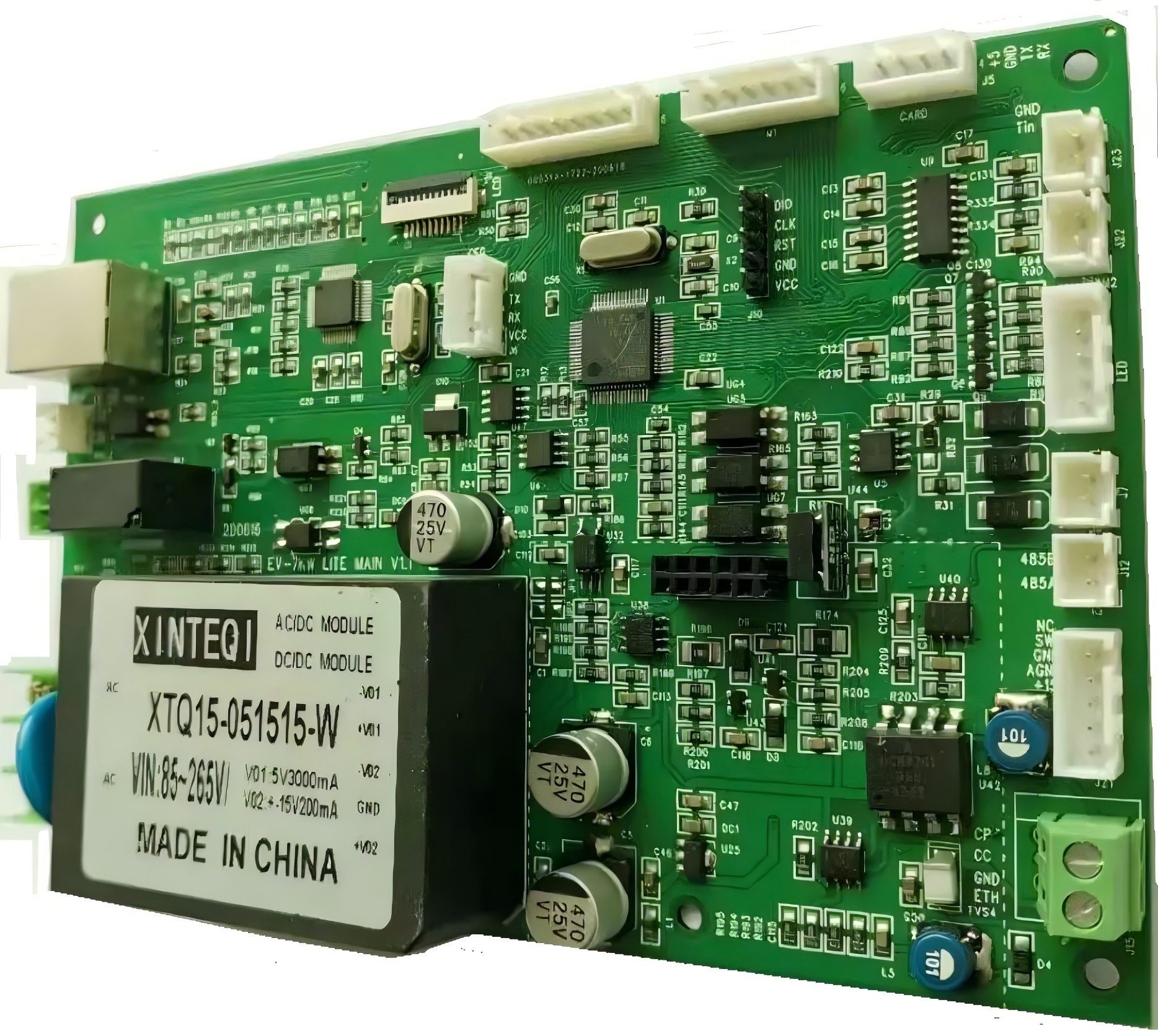
الفصل 7
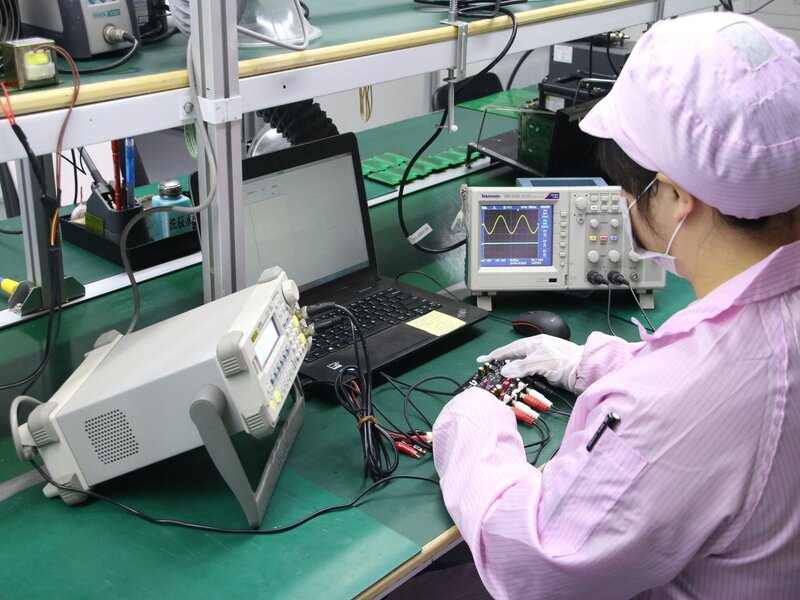
تقنيات تجميع اللوحات المطبوعة
تكنولوجيا التركيب السطحي (SMT)
تعتبر تكنولوجيا التركيب السطحي (SMT) طريقة لإنتاج الدوائر الإلكترونية حيث يتم تثبيت المكونات مباشرة على سطح لوحة الدائرة المطبوعة. لقد أصبحت التقنية الأكثر استخداماً في تجميع الأجهزة الإلكترونية الحديثة نظرًا لكفاءتها وفعاليتها.
مزايا SMT:
- كثافة مكونات أعلى: يسمح SMT بتجميع عدد أكبر من المكونات على كلا جانبي لوحة الدائرة المطبوعة، مما يعد مثاليًا للتصاميم ذات الكثافة العالية.
- حجم مكونات أصغر: عادةً ما تكون مكونات SMT أصغر من نظيراتها ذات الثقوب الممررة، مما يسمح بتصاميم دوائر أكثر تكثيفًا.
- سرعة إنتاج أعلى: يمكن أن تكون SMT آلية للغاية، مما يجعل عملية التجميع أسرع وأكثر كفاءة.
- أداء محسّن عند الترددات العالية: تتمتع مكونات SMT بأسلاك قصيرة وصلب لحام أصغر، مما يمكن أن يكون مفيدًا للتطبيقات عالية التردد.
- خفض التكلفة: على الرغم من أن تكلفة الإعداد الأولية لـ SMT يمكن أن تكون مرتفعة، إلا أن معدلات الإنتاج الأسرع وتكلفة المواد المنخفضة يمكن أن تؤدي إلى تقليل التكلفة لكل وحدة في إنتاج الكميات الكبيرة.
تحديات SMT:
- إعداد معقد وتكلفة مبدئية أعلى: يتطلب إعداد SMT معدات أكثر تعقيدًا واستثمارًا أوليًا أعلى.
- إصلاح محدود: يمكن أن تكون مكونات SMT صعبة الاستبدال أو الإصلاح نظرًا لحجمها الصغير وتكوينها الكثيف.
- الحساسية للحرارة: بعض مكونات SMT حساسة للحرارة، مما يمكن أن يعقد عملية اللحام.
تكنولوجيا الثقوب الممررة (THT)
تتضمن تكنولوجيا الثقوب الممررة (THT) إدخال أسلاك المكونات من خلال الثقوب المحفورة في لوحة الدائرة المطبوعة ثم لحامها في مكانها. هذه التقنية تم استبدالها إلى حد كبير بـ SMT في الإنتاج الضخم لكنها لا تزال مفيدة في تطبيقات معينة.
مزايا THT:
- روابط ميكانيكية قوية: تجعل أسلاك المكونات التي تمر عبر لوحة الدائرة المطبوعة وصلات THT أقوى وأكثر ملاءمة للمكونات التي قد تتعرض لضغوط فيزيائية.
- سهولة اللحام والإصلاح: يعتبر لحام الثقوب الممررة عمومًا أبسط في الأداء والإصلاح، مما يمكن أن يكون ميزة للنماذج الأولية والإنتاج بكميات منخفضة.
- تحمل أفضل للحرارة والتوتر: المكونات التي تتعامل مع مستويات عالية من التوتر والحرارة غالبًا ما تكون أكثر ملاءمة لـ THT لأن التصميم يسمح بتفريغ حرارة أفضل.
تحديات THT:
- كثافة مكونات أقل: يستخدم THT مساحة أكبر على لوحة الدائرة المطبوعة لأن الثقوب يجب أن تُحفر وأسلاك يجب إدخالها عبر اللوحة.
- سرعة تجميع أبطأ: يتطلب THT عمومًا وضع يدوي ولحام المكونات، مما يمكن أن يكون أبطأ وأكثر استهلاكًا للعمالة من SMT.
- زيادة حجم اللوحة المطبوعة والتكلفة: نظرًا لكثافته الأقل من المكونات والحاجة إلى حفر الثقوب، يمكن أن يؤدي THT إلى زيادة حجم اللوحة المطبوعة وارتفاع التكاليف، خصوصًا في الدوائر المعقدة.
دمج SMT وTHT
في الممارسة العملية، تستخدم العديد من لوحات الدوائر الحديثة مزيجًا من كل من SMT وTHT. تسمح هذه الطريقة الهجينة لك بتحسين كل من القوة الميكانيكية والأداء الكهربائي للوحة الدائرة عن طريق الاستفادة من مزايا كل تقنية تجميع. على سبيل المثال، قد تستخدم المكونات التي تحتاج إلى تحمل الضغط الميكانيكي أو درجات الحرارة العالية THT، بينما تستخدم معظم المكونات الأخرى SMT لتوفير المساحة والتكلفة. توفر هذه الطريقة لوحات دوائر قوية وعالية الأداء تعمل بشكل جيد لمجموعة واسعة من تطبيقات الإلكترونيات الاستهلاكية.
الفصل 8
الابتكارات في اللوحات المطبوعة للإلكترونيات الاستهلاكية
نظرة عامة على اللوحات المطبوعة في الإلكترونيات الاستهلاكية
تعتبر اللوحات المطبوعة (PCB) العمود الفقري للإلكترونيات الاستهلاكية الحديثة. تشكل هذه المكونات الأساس الذي تُركب عليه مختلف المكونات الإلكترونية لإنشاء دوائر معقدة. تُستخدم PCB في الإلكترونيات الاستهلاكية في كل جهاز تقريبًا، من الهواتف الذكية والأجهزة اللوحية إلى أجهزة التلفاز والميكروويفات. تحدد تصميم وجودة اللوحة المطبوعة وظيفة الجهاز وموثوقيته وأدائه.
لا يمكن المبالغة في أهمية PCB في الإلكترونيات الاستهلاكية. فهي تقدم الاتصالات الكهربائية الضرورية للترانزستورات والمقاومات والمكثفات ومكونات أخرى، مما يتيح العمليات المعقدة التي تقوم بها الأجهزة الحديثة. مع التقدم في التكنولوجيا، زادت تعقيدات PCB للإلكترونيات الاستهلاكية، حيث تم دمج لوحات متعددة الطبقات تدعم المزيد من المكونات في مساحة مضغوطة. سمح هذا التطور بتطوير أجهزة أكثر ذكاءً وكفاءة في استهلاك الطاقة وغنية بالميزات التي تستمر في تحويل الحياة اليومية.
أهمية PCB في الأجهزة الاستهلاكية الحديثة
تعتبر PCB حاسمة لأداء ومتانة الإلكترونيات الاستهلاكية. يتم تصميمها بدقة لتحمل متطلبات الاستخدام اليومي والظروف المحددة التي تعمل تحتها الأجهزة المختلفة. على سبيل المثال، يجب أن تكون PCB المستخدمة في جهاز قابل للارتداء مثل الساعة الذكية متينة ومرنة للغاية، وقادرة على تحمل الضغوط الفيزيائية والعوامل البيئية مثل الرطوبة وتقلبات درجات الحرارة.
علاوة على ذلك، تمتد أهمية PCB إلى ما هو أبعد من مجرد الوظائف. في صناعة الإلكترونيات الاستهلاكية، حيث المنافسة في السوق شرسة، تساهم الابتكارات في تصميم PCB بشكل مباشر في النجاح التجاري للمنتجات. يمكن أن تؤدي PCB المتقدمة إلى إلكترونيات أصغر وأسرع وأكثر قوة، مما يجذب المستهلكين الذين يبحثون عن أحدث التقنيات. بالإضافة إلى ذلك، تؤثر كفاءة لوحة PCB على استهلاك الطاقة الكلي للجهاز، وهو عامل حاسم في الالتزام بالمعايير العالمية للطاقة وتفضيلات المستهلكين للمنتجات المستدامة.
في الختام، تعتبر PCB ضرورية في تطوير وتعزيز الإلكترونيات الاستهلاكية. فهي لا تضمن فقط أن تعمل الأجهزة كما هو متوقع، بل تلعب أيضًا دورًا مهمًا في الابتكار المستمر وقابلية تسويق المنتجات الاستهلاكية. مع استمرار تقدم التكنولوجيا، من المتوقع أن تتوسع دور PCB في الإلكترونيات الاستهلاكية أكثر، مما يعزز قدرات جديدة في الاتصال والأداء وتجربة المستخدم.

الفصل 9

التحديات في اللوحات المطبوعة للإلكترونيات الاستهلاكية
التقليل الحجم
بينما تستمر الإلكترونيات الاستهلاكية في الانكماش في الحجم بينما تزداد في الوظائف، يواجه مصممو اللوحات المطبوعة تحدي الحجم الصغير بشكل كبير. يتطلب هذا الاتجاه دمج المزيد من المكونات في مساحة أصغر دون المساس بأداء الجهاز أو متانة اللوحة المطبوعة.
- لوحات الاتصالات ذات الكثافة العالية (HDI): تُستخدم هذه اللوحات بشكل متزايد لدعم الاتجاه نحو التقليل في الحجم، حيث تسمح بخطوط ومسافات أنحف، وفتحات أصغر، وترتيب مكونات أكثر كثافة.
- تقنيات التعبئة المتقدمة: تعتبر تقنيات مثل التعبئة بحجم الشريحة (CSP) والمصفوفات الشبكية (BGA) أساسية لتقليل البصمة الخاصة بالمكونات الفردية على اللوحة المطبوعة.
- تعقيد التصميم: مع تقليل الحجم، يزداد التعقيد في توصيل وإدارة الطبقات بشكل كبير. يجب على المصممين استخدام أدوات CAD المتقدمة وبرامج المحاكاة لضمان الحفاظ على تكامل الإشارة والوظائف.
تبديد الحرارة
مع زيادة قوة وصغر حجم الأجهزة الإلكترونية، تزداد كمية الحرارة الناتجة عن المكونات. تعتبر إدارة الحرارة بفعالية أمرًا حيويًا لمنع ارتفاع درجة الحرارة، مما يمكن أن يقلل من مدة حياة المكونات ويؤثر على موثوقية الجهاز.
- تقنيات إدارة الحرارة: يساعد دمج الفتحات الحرارية، ومبددات الحرارة، والوسائد الحرارية في تصميم اللوحة في توجيه الحرارة بعيدًا عن المكونات الحرجة. تستخدم المواد ذات الموصلية الحرارية العالية، مثل النحاس، عادةً لتعزيز تبديد الحرارة.
- اختيار المكونات وترتيبها: يجب على المصممين اختيار المكونات التي تولد حرارة أقل بعناية وتحسين ترتيبها على اللوحة لتيسير circulation الهواء وتوزيع الحرارة بشكل أفضل.
- تصميمات متعددة الطبقات: يمكن أن يساعد إضافة المزيد من الطبقات إلى اللوحة في توزيع المكونات المولدة للحرارة، مما يسهم في إدارة الأحمال الحرارية بشكل أكثر فعالية.
المخاوف البيئية
تعتبر التأثيرات البيئية لتصنيع اللوحات المطبوعة والتخلص منها مصدر قلق متزايد. يطالب المستهلكون والهيئات التنظيمية بشكل متزايد بأن تكون الإلكترونيات صديقة للبيئة ومستدامة.
- مواد خالية من الرصاص وخالية من الهالوجين: يُعتبر الابتعاد عن اللحام المعتمد على الرصاص والمثبطات النارية الهالوجينية أمرًا حيويًا. يتم اعتماد المواد التي تعد أكثر أمانًا لكل من البيئة وصحة الإنسان.
- إعادة التدوير وإعادة الاستخدام: يصبح من المهم تصميم اللوحات لتكون قابلة لإعادة التدوير بسهولة في نهاية دورة حياتها. يشمل ذلك اختيار المواد التي يمكن فصلها وإعادة تدويرها بكفاءة.
- عمليات تصنيع موفرة للطاقة: يعد تقليل استهلاك الطاقة والنفايات الناتجة أثناء تصنيع PCB هدفًا بالغ الأهمية. يشمل ذلك تحسين خطوط الإنتاج واستخدام مصادر الطاقة المتجددة عندما يكون ذلك ممكنًا.
يتطلب مواجهة هذه التحديات الابتكار المستمر والتكيف في تصميم وتصنيع اللوحات المطبوعة. مع تقدم التكنولوجيا، يجب أن تتقدم الاستراتيجيات المستخدمة للتغلب على هذه العقبات أيضًا، مما يضمن أن تستمر الإلكترونيات الاستهلاكية في التطور بطريقة تلبي توقعات المستهلكين والمعايير البيئية.
الفصل 10
مستقبل اللوحات المطبوعة في الإلكترونيات الاستهلاكية
توقعات التطورات المستقبلية والاتجاهات السوقية
من المحتمل أن يتم دفع مستقبل اللوحات المطبوعة في الإلكترونيات الاستهلاكية بواسطة عدة تطورات رئيسية واتجاهات سوقية:
التقليل المستمر في الحجم: من المتوقع أن تستمر الاتجاهات نحو الأجهزة الأصغر والأكثر كثافة، مما يدفع حدود تكنولوجيا اللوحات المطبوعة الحالية. ستعزز الابتكارات في النانو تكنولوجيا والميكروإلكترونيات إنتاج لوحات مطبوعة رفيعة للغاية ومرنة يمكن دمجها في أشكال أجهزة مبتكرة مثل التكنولوجيا القابلة للارتداء وحتى الأجهزة القابلة للزرع.
دمج المواد المتقدمة: مع تزايد الوظائف المطلوبة من الإلكترونيات الاستهلاكية، ستلعب دمج المواد الجديدة مثل الجرافين، والبوليمرات الموصلية، والمركبات المتقدمة دورًا حاسمًا. تقدم هذه المواد خصائص كهربائية وحرارية وميكانيكية متفوقة يمكن أن تعزز من أداء ومتانة لوحات PCB.
PCB الذكية: مع ارتفاع معدل اعتماد إنترنت الأشياء (IoT) والأجهزة الذكية، ستصبح لوحات PCB بدورها “أذكى”. يتضمن ذلك تضمين المستشعرات مباشرة في اللوحة، مما يمكنها من جمع البيانات وتقديم التغذية الراجعة في الوقت الحقيقي، بالإضافة إلى القدرة على مراقبة وتحسين أدائها بشكل تلقائي.
دمج الذكاء الاصطناعي وتعلم الآلة: ستُستخدم تقنيات الذكاء الاصطناعي وتعلم الآلة بشكل متزايد ليس فقط في تصميم وتصنيع لوحات PCB، بل أيضًا ضمن اللوحة نفسها لزيادة تحسين الأداء، والصيانة التنبؤية، وتحسين التفاعل مع المستخدم.
الجيل الخامس وما بعده: مع تقدم معايير الاتصالات إلى الجيل الخامس وما بعده، ستحتاج لوحات PCB لدعم الترددات الأعلى ومعدلات البيانات الأسرع. سيتطلب ذلك ابتكارات في تصميم اللوحة، وعلوم المواد، وإدارة سلامة الإشارة.
دور الاستدامة وإعادة التدوير في تصميم PCB
تزداد أهمية الاستدامة في تصميم PCB، متأثرة باللوائح البيئية وطلب المستهلكين على المنتجات الأكثر خضرة:
مواد صديقة للبيئة: يتزايد الاتجاه نحو استخدام مواد أقل ضررًا بالبيئة. يشمل ذلك استخدام لحام خالٍ من الرصاص، ومثبطات نيران خالية من الهالوجين، ومواد أساسية قابلة للتحلل لصنع اللوحات المطبوعة.
التصميم للتمكين من إعادة التدوير: يتم تصميم لوحات PCB لتسهيل تفكيكها وإعادة تدويرها في نهاية دورة حياتها. يتضمن ذلك استخدام أنواع أقل من المواد وتصميمها بطريقة تسمح بفصل المكونات بسهولة دون تدميرها، مما يسهل عمليات إعادة التدوير الأكثر كفاءة.
تصنيع موفر للطاقة: يسعى المصنعون بشكل متزايد لتقليل استهلاك الطاقة في عمليات الإنتاج الخاصة بهم. يشمل ذلك تحسين تقنيات التصنيع الحالية واعتماد تقنيات جديدة مثل التصنيع الإضافي، والتي يمكن أن تقلل من الهدر واستخدام الطاقة.
تقييم دورة الحياة: تقوم المزيد من الشركات بإجراء تقييمات كاملة لدورة الحياة لمنتجاتها لفهم وتقليل التأثير البيئي من التصنيع إلى التخلص. تساعد هذه المقاربة الشاملة المصنعين في تحديد المجالات التي يمكن تحسينها وتبرز التزامهم بالاستدامة.
في الختام، سيتسم مستقبل اللوحات المطبوعة في الإلكترونيات الاستهلاكية بالتقدم التكنولوجي الذي لا يعزز الأداء فحسب، بل يتناول أيضًا القضايا البيئية. سيكون احتضان هذه الاتجاهات والابتكارات أمرًا حاسمًا للمصنعين الذين يسعون للبقاء تنافسيين في سوق تتطور بسرعة.

تواصل معنا
أين نحن؟
الحديقة الصناعية، رقم 438 شارع دونغ هوان، رقم 438، شاجينغ دونغ هوان، منطقة باوان، شنتشن، قوانغدونغ، الصين
الطابق 4، مبنى زهيهوي الإبداعي، رقم 2005 شارع شيهوان، شاجينغ، منطقة باوان، شنتشن، الصين
الغرفة A1-13، الطابق 3، مركز يي ليم الصناعي، 2-28 شارع كواي لوك، كواي تشونغ، هونغ كونغ
service@southelectronicpcb.com
الهاتف: +86 400 878 3488
أرسل لنا رسالة
كلما كانت التفاصيل أكثر دقة، كلما تمكنا من المضي قدمًا إلى الخطوة التالية أسرع.



